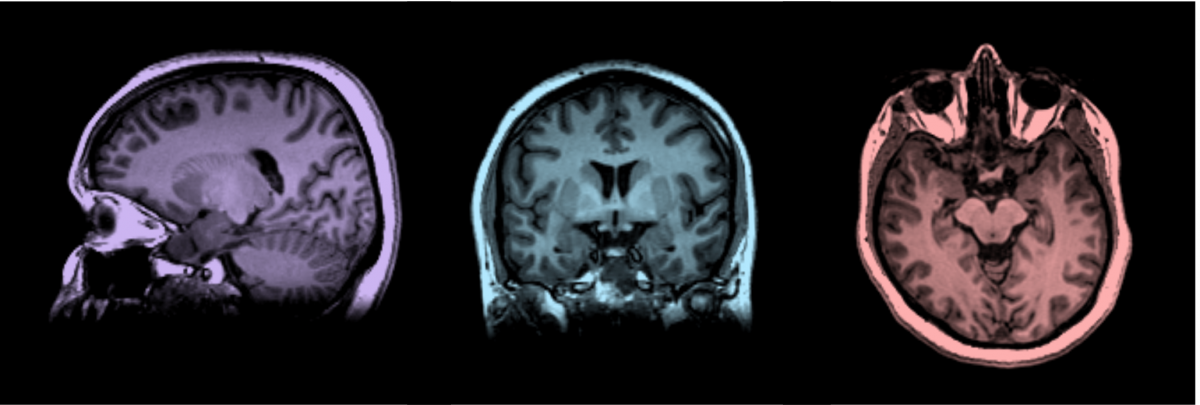Exploring the origins and mechanisms of pediatric mood disorders for improved personalized treatment
Currently, mental health resources and child and adolescent psychiatrists are extremely limited in the U.S. This has resulted in increased cases of suicide, gun violence, substance abuse, and teen pregnancy, among other morbidities that can shorten life expectancy. Dr. Manpreet K. Singh, Assistant Professor of Psychiatry and Behavioral Sciences and Director of the Pediatric Mood Disorders Program and the Pediatric Emotion And Resilience Lab (PEARL) at Stanford University School of Medicine, is exploring novel early prevention and intervention strategies that help children in the earliest stages of mood disorder development. Her goal is to prevent children from developing impairment from major mood and anxiety disorders that could last a lifetime.
Little is known about the developing brain, especially in the context of major mood disorders such as Bipolar Disorder (BD) and Major Depressive Disorder (MDD). Understanding how these disorders shape brain development and how their interventions work is critical for predicting improved and adaptive outcomes in children. Dr. Singh’s research focuses on investigating the origins and pathways for developing major mood disorders during childhood, as well as methods to protect and preserve function after mood symptoms begin. She is examining the neural benefits of family-focused psychotherapy and mindfulness meditation in order to reduce mood symptoms and family stress. She is also assessing the potential benefits and risks of antidepressant therapy in youth who may be at high risk for developing side effects. Dr. Singh’s research will provide significant leads on detecting the earliest possible risk factors for mood disorders, which are increasingly becoming the most significant and burdensome conditions worldwide. Her ultimate goal is to prevent related leading causes of death, such as suicide, by laying the groundwork for the most adaptive trajectories possible and to improve effectiveness of personalized treatment options in affected youth.
Dr. Singh’s multidisciplinary team, which includes clinician scientists, psychiatrists, MRI experts, psychologists, postdoctoral fellows, residents, medical students, research coordinators, and data analysts, evaluate and treat youth with a variety of mood disorders. Together they collaborate with experts in the fields of genetics, endocrinology, computer science, psychology, and neuroscience, who assist in their pursuit of understanding the core mechanisms that underlie the onset and progression of pediatric onset mood disorders. They combine novel multimodal scientific techniques to answer fundamental questions about the nature, origin, and mechanisms of pediatric mood disorders. Using a variety of different brain and diagnostic assessments in circulating blood, they perform assessments that identify how environmental factors, such as stress, as well as a child’s genetic vulnerabilities, affect and influence a liability for developing progressive mood disorders later in life.
Current Projects Include:
- Understanding Risk and Resilience In Youth at Risk for Major Mood Disorders (R & R) – Dr. Singh and her team will address key challenges of developing mood disorders in childhood with their Risk and Resilience Study, which comprises 150 families that include fathers, mothers, and healthy youth, ages 8-17 years. They are investigating the underlying mechanisms of family history as a risk factor for developing BD and MDD with the goal of reducing the incidence of diagnostic confusion, which may lead to improper or delayed treatment. Using multivariate statistical approaches, Dr. Singh’s team also aims to differentiate etiological risks of BD from MDD to predict a more accurate outcome. The team is also exploring the neurobiological basis of resilience for youth who have parents with BD or MDD, but do not develop any mood disorders. Dr. Singh and her team aim to provide innovative solutions to contemporary diagnostic and treatment challenges by charting the evolution of mood symptoms in youth at risk starting from health to disease.
- Measuring Obesity and Mood Effects on Neurobehaviors ThroUgh Maturation (MOMENTUM) – Dr. Singh and her team are, for the first time, exploring trajectories of brain development in children with depression and obesity in her MOMENTUM study. Here, the team is exploring the shared mechanisms and risk factors of depression and obesity among youth on a track to develop worsening depression symptoms down the line. Worsening depression may eventually lead to developing serious medical complications including diabetes, cardiovascular disease, and suicide. This study will determine whether treating depression early in life can prevent suicide and diabetes alike, and stimulate the development of novel treatments informed by targets discovered in this study.
- Mechanisms of Antidepressant-Related Dysfunctional Arousal in High Risk Youth (Arousal Induced by Medication Study - AIMS) – Side effects of antidepressants are uncommon. Preliminary data from our group and others have suggested that a family history of bipolar disorder can increase chances of side effects from 10% to up to 50%. Stanford University and the University of Cincinnati are conducting the first definitive clinical trial aimed to understand underlying mechanisms and risk factors for developing side effects from antidepressants in high-risk youth for the treatment of depression and anxiety. Participants are carefully monitored for response and side effects to study treatment weekly, and are provided brain MRIs and pharmacogenomics to better understand their individual responses to treatment.
- Identifying the Neurodevelopmental Features of Sexual Dimorphism in Pediatric Psychopathology – It is commonly observed that boys are more likely to develop ADHD and other disruptive behavioral disorders, whereas girls are more likely to develop depression and anxiety. Here, Dr. Singh’s team of experts are trying to understand the neurobiological basis of this sex difference. Using the Philadelphia Neurodevelopmental Cohort of 10,000 kids assessed and characterized using clinical, cognitive, neuroimaging, and genetic assessments, Dr. Singh’s team is performing secondary advanced data analyses to determine the biology underlying behavioral differences between boys and girls.

Bio
Dr. Manpreet Singh’s career in medicine was inspired by her younger sister, who was born with Down Syndrome and congenital heart disease. During her childhood, her parents had limited resources, as little was known about Down Syndrome. Doctors often gave her sister a negative prognosis, warning her family that she would not live beyond certain developmental milestones. Dr. Singh felt as though every trip to the doctor resulted in bad news. She knew she wanted to become a doctor who helped families like her own. Rather than give bad news to families, she wanted a career in medicine that would instill hope and validation to families that children have great potential, regardless of their vulnerabilities. Her sister is now 36 years old and continues to thrive without any significant or complex medical intervention.
Dr. Singh earned her M.D. at Michigan State University and her M.S. at University of Michigan, completing her combined and integrated residency in Pediatrics, Psychiatry, and Child and Adolescent Psychiatry at Cincinnati Children’s Hospital Medical Center. This allowed her to integrate her clinical, research, and teaching interests into a career in academic medicine, inspired with a singular mission to prevent lifelong disease burden through prevention. After two years of postdoctoral training at the Center for Interdisciplinary Brain Sciences Research at Stanford University, she joined the faculty at Stanford in 2009.
Dr. Singh’s work is directly inspired by her patients and their families, and aims to help youth make smooth transitions into adulthood. She is a mother of three children herself, which has only strengthened her capacity to understand and support her patients and their families. Through integration of cutting edge research methods, Dr. Singh is able to provide her patients with the latest innovations in treatment, with the hope of making a significant impact toward preventing lifelong disability from childhood onset mood disorders.


